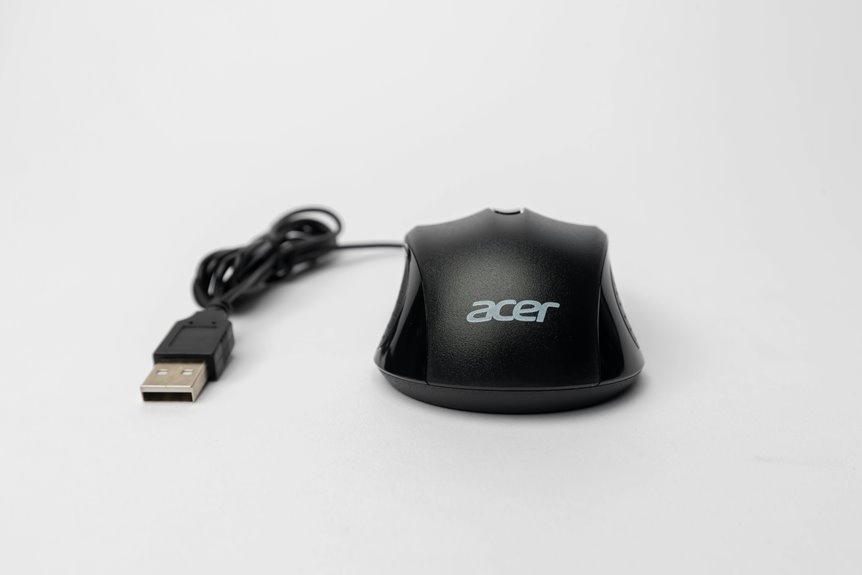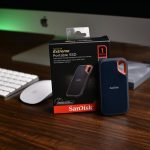When you're working on tasks that require a high level of detail, like graphic design or data entry, mouse pointer precision can make a significant difference. By adjusting your mouse settings, you can enhance your control and improve your efficiency. But it's not just about the basic settings; there are various factors to consider. Let's explore how to optimize your setup for the best results.
Table of Contents
Key Takeaways
- Access mouse settings through your device's Control Panel or System Preferences to adjust pointer precision settings.
- Enable "Enhance pointer precision" for improved cursor accuracy during detailed tasks.
- Adjust the pointer speed slider for optimal sensitivity tailored to your work style.
- Consider customizing DPI settings for better control, especially for graphic design tasks.
- Regularly test and fine-tune your settings based on specific tasks to enhance overall precision.
Understanding Mouse Pointer Precision
Understanding mouse pointer precision is essential for enhancing your computing experience. When you move your mouse, precision determines how accurately your pointer reflects that movement on the screen.
High precision means smaller, more deliberate movements translate into precise cursor placement, which is crucial for tasks like graphic design or detailed data entry. On the other hand, low precision can lead to frustration, causing your pointer to overshoot or undershoot targets.
Adjusting Mouse Settings in Windows
To achieve the optimal mouse pointer precision discussed earlier, adjusting your mouse settings in Windows is a key step.
Start by opening the Control Panel and selecting "Mouse." Here, you can tweak various settings. In the "Pointer Options" tab, check the box for "Enhance pointer precision." This will improve accuracy by adjusting sensitivity based on speed.
Next, you might want to adjust the pointer speed slider. A slower speed can help you be more precise in detailed tasks.
Don't forget to apply your changes. Afterward, test the new settings to see how they feel during your work.
Fine-tune them further if needed, ensuring your mouse setup works best for your specific tasks. Happy adjusting!
Customizing Mouse Settings on Mac
If you're looking to customize your mouse settings on a Mac, it's a straightforward process that can enhance your overall experience.
Start by clicking on the Apple menu in the top left corner, then select "System Preferences." From there, click on "Mouse." Here, you can adjust tracking speed, scrolling speed, and double-click speed to suit your preferences.
Try sliding the tracking speed to see how it affects cursor movement. If you use gestures with a trackpad or Magic Mouse, you can enable or disable specific gestures in the "Point & Click" section.
Don't forget to explore the "More Gestures" tab to personalize your navigation even further. With these adjustments, your mouse will feel just right for your tasks.
Utilizing DPI Settings for Enhanced Control
Adjusting your mouse settings can significantly improve your control, especially when it comes to DPI (dots per inch) settings.
The right DPI allows for precise movements, making it easier to navigate detailed tasks. Here's how to make the most of your DPI settings:
- Low DPI: Use a lower DPI for tasks requiring precision, like graphic design or editing. It gives you finer control over small movements.
- High DPI: Opt for a higher DPI when you need swift movements, like in gaming or quickly navigating large screens.
- Customization: Many mice allow you to customize DPI settings on-the-fly, letting you switch between precision and speed as needed.
Experiment with these settings to find the perfect balance for your work style.
Exploring Software Options for Precision
How can software enhance your mouse precision? Various applications can help you fine-tune your settings for better control.
For instance, many gaming mice come with dedicated software that allows you to adjust DPI levels, polling rates, and button configurations. These features enable you to create profiles tailored for different tasks, whether you're editing images or playing games.
Additionally, software like Windows Mouse Properties lets you enhance pointer precision, adjusting responsiveness to your movements.
Third-party tools, such as X-Mouse Button Control, offer even more customization, allowing you to map mouse buttons for specific functions.
Tips for Developing Better Mouse Control
While mastering mouse control takes practice, implementing a few simple techniques can lead to significant improvements. Start by adjusting your mouse sensitivity settings to find a level that feels comfortable. This helps you make precise movements without overshooting your target.
Here are some tips to enhance your mouse control:
- Use a mouse pad: A smooth surface can significantly improve tracking and accuracy.
- Practice slow movements: Gradually increase your speed as you become more comfortable, allowing your hand to develop muscle memory.
- Take breaks: Regular breaks help reduce fatigue, keeping your movements steady and controlled.
Troubleshooting Common Mouse Issues
Even the best mouse can encounter issues, so it's important to know how to troubleshoot common problems. Start by checking the connection; ensure your mouse is properly plugged in or connected via Bluetooth. If it's unresponsive, try replacing the batteries or charging it.
Here's a quick reference table to help you identify common issues:
| Issue | Solution | Prevention |
|---|---|---|
| Cursor doesn't move | Check connection and batteries | Regularly clean mouse |
| Double-clicking issue | Adjust settings in control panel | Use a mouse pad |
| Lagging cursor | Change USB port | Update drivers regularly |
| Scroll wheel not working | Clean the wheel | Avoid sticky surfaces |
Frequently Asked Questions
How Does Mouse Pointer Precision Affect Gaming Performance?
Mouse pointer precision can significantly impact your gaming performance. If it's too high, you might struggle with accuracy, while too low can hinder quick reflexes. Finding the right balance enhances your overall gameplay experience and control.
Can I Use a Tablet for Detailed Work Instead?
Absolutely, you can use a tablet for detailed work! Tablets often offer precision with stylus support, making them great for tasks like drawing or editing. Just ensure you've got the right apps and accessories for your needs.
What Are the Best Mouse Brands for Precision Tasks?
When choosing a mouse for precision tasks, consider brands like Logitech, Razer, and SteelSeries. They offer customizable DPI settings, ergonomic designs, and reliable sensors, ensuring you achieve accuracy and comfort during your detailed work.
Is There a Difference Between Laser and Optical Mice for Precision?
Yes, there's a difference. Laser mice work on various surfaces, providing greater precision, while optical mice perform best on specific ones. For detailed tasks, consider your surface choice to maximize your mouse's effectiveness.
How Can I Clean My Mouse for Better Performance?
To clean your mouse for better performance, unplug it, use a soft cloth with mild cleaner, and gently wipe the exterior. Don't forget to clean the sensor area for optimal tracking accuracy and responsiveness.




